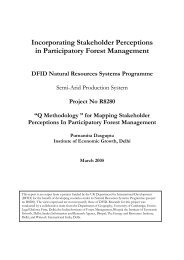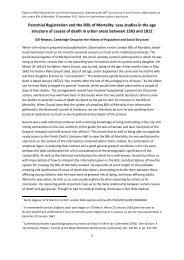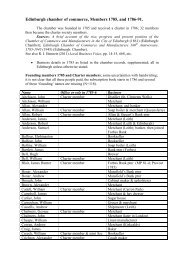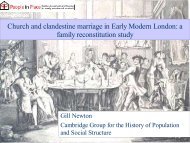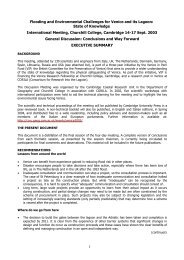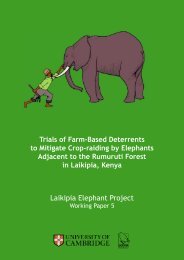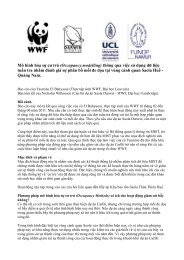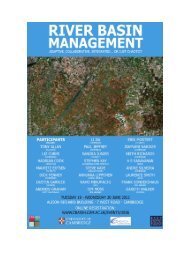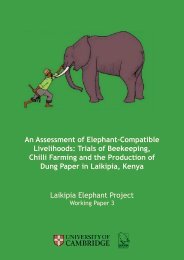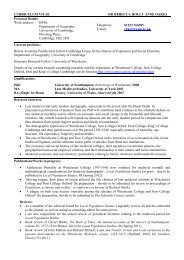Rob Small's Masters Thesis: Uptake and the success of insect ...
Rob Small's Masters Thesis: Uptake and the success of insect ...
Rob Small's Masters Thesis: Uptake and the success of insect ...
You also want an ePaper? Increase the reach of your titles
YUMPU automatically turns print PDFs into web optimized ePapers that Google loves.
Addressing <strong>the</strong> first area <strong>of</strong> influence it appears that <strong>the</strong> IFTA project has allowed <strong>the</strong><br />
sustainable use <strong>of</strong> butterflies <strong>and</strong> o<strong>the</strong>r <strong>insect</strong> as <strong>the</strong> same species have been provided to <strong>the</strong><br />
organisation from <strong>the</strong> same locale for twenty-five years. However, <strong>the</strong>re is no quantitative<br />
pro<strong>of</strong> that farming <strong>and</strong> collecting has not eroded <strong>the</strong> integrity <strong>of</strong> <strong>insect</strong> populations.<br />
Comments made in 1992 still hold true today that <strong>the</strong>re has not been any quantitative work<br />
conducted on <strong>the</strong> effects that butterfly farming has had on wild populations<br />
(Martens, 1992). Until this work has been conducted <strong>the</strong>re can be no conclusive evidence<br />
that <strong>the</strong>re is a direct link between <strong>insect</strong> farming/collecting <strong>and</strong> conservation <strong>of</strong> biological<br />
resources <strong>and</strong> it is unable to have ‘rightly earned its reputation as an exemplary case <strong>of</strong><br />
wildlife utilisation’ (Martens, 1992). However, in addressing <strong>the</strong> second area <strong>of</strong><br />
conservation influence <strong>insect</strong> farming <strong>and</strong> collecting has gone some way to increase<br />
awareness that forests can provide an income source o<strong>the</strong>r than timber. In <strong>the</strong> areas studied<br />
in this paper butterflies <strong>and</strong> <strong>insect</strong>s alone do not have a high enough value to persuade<br />
people to keep part <strong>of</strong> <strong>the</strong>ir forest as a ‘set aside’ conservation area, but <strong>the</strong>re are reports <strong>of</strong><br />
people in <strong>the</strong> Aseki area (a two drive to <strong>the</strong> east <strong>of</strong> Bulolo) setting aside forest to act as a<br />
source <strong>of</strong> O. meridionalis.<br />
The image <strong>of</strong> <strong>insect</strong> farming being a perfect way <strong>of</strong> providing rural incomes is unfounded<br />
<strong>and</strong> <strong>the</strong>re are many problems facing those using it as a means <strong>of</strong> income. A reassessment<br />
<strong>and</strong> fur<strong>the</strong>r research into <strong>insect</strong> farming <strong>and</strong> collecting in Papua New Guinea is required.<br />
More work needs to be conducted at a village level, especially in <strong>the</strong> areas that have ceased<br />
farming, in Low Income provinces in order to underst<strong>and</strong> why farming or collecting failed<br />
in those regions, ra<strong>the</strong>r than to rely on conjecture. The <strong>insect</strong> trading agencies that have<br />
fallen outside <strong>the</strong> scope <strong>of</strong> this paper need to be investigated before a complete<br />
84




